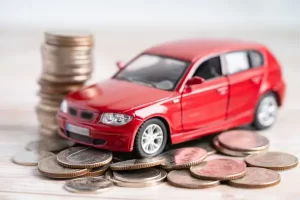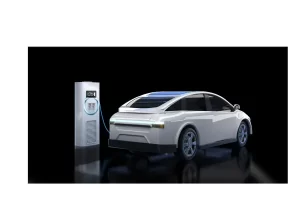The rise of electric vehicles (EVs) is transforming the automotive landscape. As more drivers make the switch to EVs for their eco-friendliness and lower running costs, it’s crucial to understand how to maintain these vehicles for optimal performance. One of the most vital yet often overlooked aspects of EV maintenance is tire care. Proper tire maintenance not only enhances your vehicle’s efficiency but also improves safety and extends the lifespan of your tires.
In this article, we’ll delve deep into tire care specifically for electric vehicles, exploring everything from understanding tire specifications to maintaining them for various driving conditions. Whether you’re a seasoned EV owner or considering your first purchase, these tips will help you maximize efficiency and ensure a smooth ride.
Understanding EV Tires
Differences Between Standard and EV Tires
Electric vehicles require specialized tires that cater to their unique needs. One of the primary differences lies in load capacity. EVs are typically heavier than their gasoline counterparts due to the substantial weight of their batteries. This means that the tires need to have a higher load rating to support this extra weight without compromising safety or performance.
Durability is another critical factor. EV tires are designed with reinforced sidewalls to withstand the increased weight and torque. The materials used are often more robust, allowing them to endure the demands of frequent acceleration and deceleration that are characteristic of electric driving.
Finally, the tread design of EV tires is tailored for better traction and reduced rolling resistance. Rolling resistance affects how much energy is needed to keep the vehicle moving, directly impacting battery life and range. EV tires often have unique tread patterns that provide optimal grip while minimizing energy loss.
Importance of Tire Specifications
Following the manufacturer’s recommendations for tire specifications is essential for ensuring safety and efficiency. Original Equipment Manufacturer (OEM) specifications include tire size, load index, and speed rating, all of which are crucial for optimal performance.
Additionally, fuel efficiency ratings should be considered when selecting tires. Many tire brands provide rolling resistance ratings, which indicate how much energy the tire consumes while in motion. Choosing tires with low rolling resistance can significantly enhance your vehicle’s efficiency, enabling you to drive farther on a single charge.
Regular Tire Maintenance
Tire Pressure
Maintaining the correct tire pressure is crucial for the performance of electric vehicles. EVs typically operate best at a higher PSI than standard vehicles, often between 32 and 40 PSI. Checking your tire pressure regularly—ideally once a month—is essential, as even a slight drop can lead to increased rolling resistance and reduced efficiency.
To check your tire pressure:
- Purchase a digital pressure gauge for accuracy.
- Remove the valve cap from your tire.
- Press the gauge firmly onto the valve stem to get a reading.
- Compare the reading with the manufacturer’s recommended PSI found in the owner’s manual or on the door jamb sticker.
If the pressure is low, use an air compressor to inflate the tire to the recommended level. Remember to check tire pressure when the tires are cold, as heat from driving can cause readings to be inaccurate.
Tread Depth
Tread depth is another crucial factor in tire maintenance. Adequate tread depth ensures proper traction, especially in wet conditions, and impacts energy efficiency. As a general rule, tires should have at least 2/32 of an inch of tread depth to be considered safe.
To measure tread depth:
- Use a tread depth gauge or the classic penny test. Insert a penny into the tread with Lincoln’s head facing down; if you can see the top of Lincoln’s head, it’s time to replace the tire.
Regularly inspecting tread depth can help you identify uneven wear patterns, which may indicate alignment or suspension issues, allowing you to address problems before they escalate.
Alignment and Balancing
Proper alignment and balancing are crucial for tire longevity and vehicle performance. Misalignment can lead to uneven tire wear, decreased fuel efficiency, and poor handling. Signs of misalignment include a steering wheel that’s off-center, pulling to one side, or uneven tire wear patterns.
It’s recommended to check your alignment every 5,000 to 10,000 miles, or whenever you notice any of the above symptoms. Tire balancing should be checked when you purchase new tires or when you notice vibrations while driving. An experienced mechanic can perform these checks and make the necessary adjustments to keep your tires in optimal condition.
Seasonal Considerations
Summer vs. Winter Tires
Choosing the right tires for the season can greatly impact safety and efficiency. Summer tires are designed for warmer conditions, providing better handling and braking performance on dry roads, while winter tires are made with specialized compounds to remain flexible in low temperatures, ensuring better traction on snow and ice.
When the temperature consistently drops below 45°F, it’s time to switch to winter tires. Conversely, once temperatures rise above this threshold, you should consider switching back to summer tires. A general rule of thumb is to change your tires based on the forecast—plan your tire swaps ahead of time to avoid any last-minute rush.
Driving Conditions
Your local weather and driving conditions also play a significant role in tire choice and care. In areas with frequent rain or snow, investing in all-season or winter tires can improve traction and safety. Urban driving may require tires that provide a balance of comfort and performance, while rural areas with rough terrain may benefit from all-terrain tires.
It’s important to adapt your tire care routine based on your driving environment. Regular inspections and adjustments based on seasonal changes will help maintain tire efficiency and longevity.
Driving Habits Impacting Tire Efficiency
Eco-Driving Tips
Your driving habits can significantly affect tire wear and vehicle efficiency. Smooth acceleration and braking not only enhance your overall driving experience but also prolong tire life. Rapid acceleration and hard braking can lead to increased wear and tear on tires, reducing their lifespan.
Adopting an eco-driving style involves:
- Accelerating gently.
- Anticipating stops to reduce braking.
- Maintaining a steady speed.
By incorporating these habits into your driving routine, you can minimize tire wear and improve your vehicle’s efficiency.
Optimal Driving Speed
Driving at optimal speeds also plays a crucial role in tire efficiency. Excessive speeds can increase rolling resistance, leading to higher energy consumption. Aim to drive within the recommended speed limits, typically between 55-65 mph for optimal efficiency.
Utilizing cruise control on highways can help maintain a steady speed, further improving your vehicle’s energy efficiency and reducing tire wear.
Load Management
Managing the weight of your EV is essential for maintaining tire efficiency. Exceeding your vehicle’s load capacity can lead to increased tire wear and potential blowouts. Always adhere to the manufacturer’s guidelines for load limits, which can be found in your vehicle’s manual.
Additionally, distribute weight evenly in your vehicle to prevent uneven tire wear. Avoid carrying unnecessary cargo and regularly clear out your trunk to keep your vehicle lightweight.
The Environmental Impact of Tire Care
Recycling and Disposal
Proper disposal of tires is vital for minimizing environmental impact. Old tires can take years to decompose and often end up in landfills. Instead, consider recycling options available in your area. Many tire shops offer tire recycling services, allowing you to dispose of your tires responsibly.
Understanding local regulations regarding tire disposal is also essential. Some regions have specific laws governing how to handle old tires, so make sure to follow these guidelines to ensure compliance.
Sustainable Tire Options
As eco-conscious consumers, many EV owners are looking for sustainable tire options. Several brands are committed to producing eco-friendly tires made from sustainable materials and processes. Brands like Michelin, Bridgestone, and Goodyear have developed tires that prioritize both performance and environmental impact.
Additionally, innovative technologies are emerging in the tire industry. For instance, some companies are exploring biodegradable tires and those made from recycled materials. Investing in these sustainable options can reduce your carbon footprint while still providing the performance you need.
Conclusion
Caring for your electric vehicle’s tires is crucial for maximizing efficiency and ensuring a safe driving experience. By understanding the unique needs of EV tires, regularly maintaining them, adapting to seasonal changes, and practicing eco-friendly driving habits, you can significantly enhance your vehicle’s performance and lifespan.
Take the time to prioritize tire care—your EV will thank you with improved efficiency, safety, and a smoother ride. Share your own tips and experiences in the comments below, and let’s build a community of informed EV owners dedicated to sustainability and performance.




